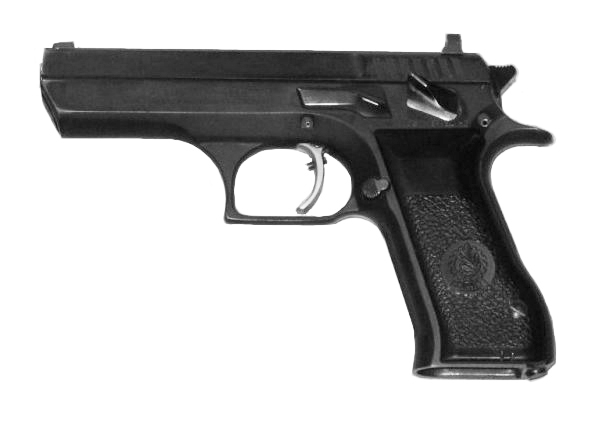Beretta Model U22 Neos Semi Auto Handgun
U22 Neos, has the distinct design, which can be best described as strange. Often mistaken as prop from sets of sci-fi movie, U22 neos is a solid plinker from the beretta stable. U22 neos comes with a 10 round magazines and features ambidextrous safety and top rail for optics. the rake angle on the grip might give an impression that it would take time to adjust to this pistol, but it doesn't. U22 neos, like all plinking handguns is lot of fun to shoot. The retail price of U22 Neos is round $250, making it a good pistol to explore the sport of precision pistol shooting.
Ruger Model 22/45 Semi Auto Handgun
Ruger 22/45 comes from the same pedigree of the Ruger MkI/II/III pistols with a twist, it has the feel and same control locations of a 1911. Ruger22/45 has the same renowned precision as the mark III pistols, with aluminium action on a polymer frame and retails for about $300.
S&W Model 22A Rimfire Handgun
Smith ans wesson 22A is a contemporary of the beretta u22 Neos, and treads on the similar look and feel, but slightly humble on the sci-fi appearance. It's a light weight, long barrel plinkster featuring 10 round magazines, top mounted rail for optics, One of the advantage over the U22 Neos is the ambidextrous mag release. The aluminium alloy and steel construction 22A retails between $280 to $320 making it a serious contender in the .22LR pistol world.
Ruger SR22 Semi Auto Handgun
SIG Sauer Mosquito Semi Automatic Pistol
Honorable Mentions
Ruger Mark III Standard Semi Automatic Handgun
S&W Model M&P 22 Semi Automatic Handgun
Chiappa Firearms 1911-22 Semi-Automatic Handgun
Chiappa M9-22 Semi Auto Handgun
Bersa Thunder 22 Semi Auto Handgun









